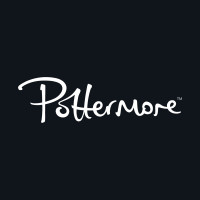
Looking for some new textbooks to get stuck into? Do you happen to be a fictional wizard? Then we have the reading list for you, courtesy of Hogwarts’ resident literary expert, Hermione Granger.
For magical beginners
Like Harry, Hermione was brought up by Muggles and had no knowledge of the wizarding world. Yet when she arrived at Hogwarts, she already had more knowledge than many of her classmates – because she’d read all of the books.
New Hogwarts students interested in following Hermione’s lead should therefore also memorise her booklist, which included:
The Standard Book of Spells (Grade 1) by Miranda Goshawk
Magical Theory by Adalbert Waffling
A Beginners’ Guide to Transfiguration by Emeric Switch
One Thousand Magical Herbs and Fungi by Phyllida Spore
Magical Drafts and Potions by Arsenius Jigger
Fantastic Beasts and Where to Find Them by Newt Scamander
The Dark Forces: A Guide to Self-Protection by Quentin Trimble

History
Basic knowledge is essential, but to really understand the wizarding world it is worth diving deeper. Titles recommended by Hermione for closer exploration include:
A History of Magic by Bathilda Bagshot
The remaining book on Hogwarts’ list of set-texts for new students, A History of Magic is far more than a school textbook, providing historical context for the wizarding world Voldemort wanted to dominate. That its author was so closely connected with Harry’s history further proves that sometimes you should play close attention to your school books.
Hogwarts: A History
As background reading for new Hogwarts students, books don’t get more helpful than this. Only Hogwarts: A History explains that the ceiling above the Great Hall is bewitched, why it’s impossible to be transported magically in or out of the school grounds, that Muggle electronics don’t work alongside high levels of magic, and that the founders of Hogwarts thought boys less trustworthy than girls to such an extent that only girls’ dormitories were subject to magical protection (‘It’s an old-fashioned rule,’ explained Hermione).
The Tales of Beedle the Bard by Beedle the Bard
It’s a book of children’s stories, yes, but Beedle’s tales show the wizarding world has a long and complex history. Some of the stories, notably 'The Tale of the Three Brothers', have had a direct impact on that history, passing from myth to truth and back again.

Background reading
Other titles to top up your knowledge:
An Appraisal of Magical Education in Europe
Modern Magical History
Great Wizarding Events of the Twentieth Century
Defence Against the Dark Arts
Hermione advocated a practical approach to Defence Against the Dark Arts, believing that theory alone was insufficient. Still, there were some books she recommended, notably Jinxes for the Jinxed – Hermione was a great believer in the usefulness of jinxes ‘when they’re used defensively’.
Other titles worth a look are:
The Rise and Fall of the Dark Arts
A Compendium of Common Curses and their Counter-Actions
The Dark Arts Outsmarted
Self-Defensive Spellwork
Confronting the Faceless

Ancient Runes
An optional subject studied by Hogwarts students from their third year upwards, Ancient Runes looked like complex work, seeing as Hermione was so often seen with a textbook on the subject. She developed such a talent for it that she went on to translate The Tales of Beedle the Bard from the original runes.
If we were Hogwarts students, maybe we could replicate Hermione’s success by reading these Ancient Runes books:
Ancient Runes Made Easy
Magical Hieroglyphs and Logograms
Spellman’s Syllabary
Advanced Rune Translation
Spells, Charms and Potions
For those wanting to emulate Hermione’s superior spellwork (see: the many defensive charms she used for protection during their Horcrux hunt) there are a few books she studied, namely:
The Standard Book of Spells, Grades 2 to 6 by Miranda Goshawk
Quintessence: A Quest
Achievements in Charming

On the other hand, Hermione had mixed results in Potions. In some cases, her ability to closely follow a recipe brought spectacular success (such as Polyjuice Potion) but sticking to the script also meant she lacked the flair of, for example, the Half-Blood Prince. Still, for any serious potion-maker, Hermione did recommend the following:
Most Potente Potions
Advanced Potion-Making
Other notable titles
So many books, so little time… These titles were also on Hermione’s recommended list:
Intermediate Transfiguration – for theoretical support in the art of Transfiguration
Home Life and Social Habits of British Muggles – for a wizarding perspective on Muggle life
The Herbology title Flesh-Eating Trees of the World
Quidditch Through the Ages – not that you can learn to ride a broomstick by reading a book, but it has some tips for the nervous flier
Regular library visits are also important. Without the library at Hogwarts, Hermione would not have discovered the truth about either Nicolas Flamel or Basilisks, so free reading of your own choice is also very useful.
The ‘would-not-recommend’ list

Hermione’s reading list was exhaustive, but there were a few she probably wouldn’t return to…
Gilderoy Lockhart’s entire backlist
Divination textbook Unfogging the Future by Cassandra Vablatsky
The Monster Book of Monsters (even after figuring out that it stops trying to kill you if you stroke the spine)
Defensive Magical Theory by Wilbert Slinkhard
The Life and Lies of Albus Dumbledore by Rita Skeeter
Horcrux books Secrets of the Darkest Art and Magick Moste Evile
Kreacher’s copy of Nature’s Nobility: A Wizarding Genealogy


